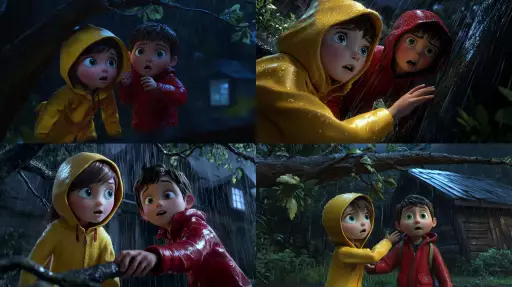Explore the Best AI Image Gallery

Capturing the Vision: AIs Transformative Impact on Product Photography
The world of product photography is undergoing a significant transformation, fueled by the rapid advancements in artificial intelligence (AI). From generating stunning visuals to automating tedious tasks, AI is poised to revolutionize how products are presented and marketed. This blog post explores the multifaceted impact of AI on product photography, examining its potential uses, addressing ethical considerations, and highlighting future trends that will shape this evolving landscape.
The Rise of AI-Powered Product Photography
AI algorithms are now capable of analyzing vast datasets of images and learning intricate patterns related to composition, lighting, and aesthetics. This enables them to generate high-quality product photos with remarkable accuracy and speed.
Applications of AI in Product Photography
- Automated Image Generation: AI models can create realistic product images from 3D models or textual descriptions, eliminating the need for physical photography setups.
- Image Enhancement and Retouching: AI algorithms can automatically enhance image quality, remove blemishes, adjust lighting, and apply creative filters to produce visually appealing results.
- Style Transfer: AI can transfer the artistic style of one image onto another, allowing brands to create unique and eye-catching product visuals that align with their brand identity.
- Virtual Try-On: AI-powered augmented reality (AR) applications enable customers to virtually try on products, such as clothing or accessories, using their smartphones or tablets.
Ethical Considerations in AI-Driven Photography
As with any powerful technology, the use of AI in product photography raises ethical considerations that must be carefully addressed:
- Bias and Representation: AI algorithms are trained on existing datasets, which may contain biases that perpetuate societal stereotypes. Its crucial to ensure that AI-generated images accurately represent diverse populations.
- Job Displacement: The automation capabilities of AI could potentially lead to job losses in the photography industry. Reskilling and upskilling programs will be essential to support affected workers.
- Transparency and Accountability: Its important to be transparent about the use of AI in product photography and establish clear lines of accountability for any potential issues or biases that arise.
Future Trends in AI-Powered Product Photography
The field of AI in product photography is constantly evolving, with several exciting trends on the horizon:
- Hyper-Personalization: AI will enable brands to create highly personalized product images tailored to individual customer preferences and demographics.
- Interactive Product Experiences: AI-powered AR and VR technologies will allow customers to interact with products in immersive and engaging ways, exploring different angles, textures, and features.
- Predictive Analytics: AI can analyze data on customer preferences and purchasing behavior to predict future trends and inform product design and marketing strategies.
Conclusion
AI is rapidly transforming the landscape of product photography, offering unprecedented opportunities for creativity, efficiency, and personalization. By embracing these advancements responsibly and addressing ethical considerations, brands can leverage AI to create compelling product experiences that captivate consumers and drive business growth.